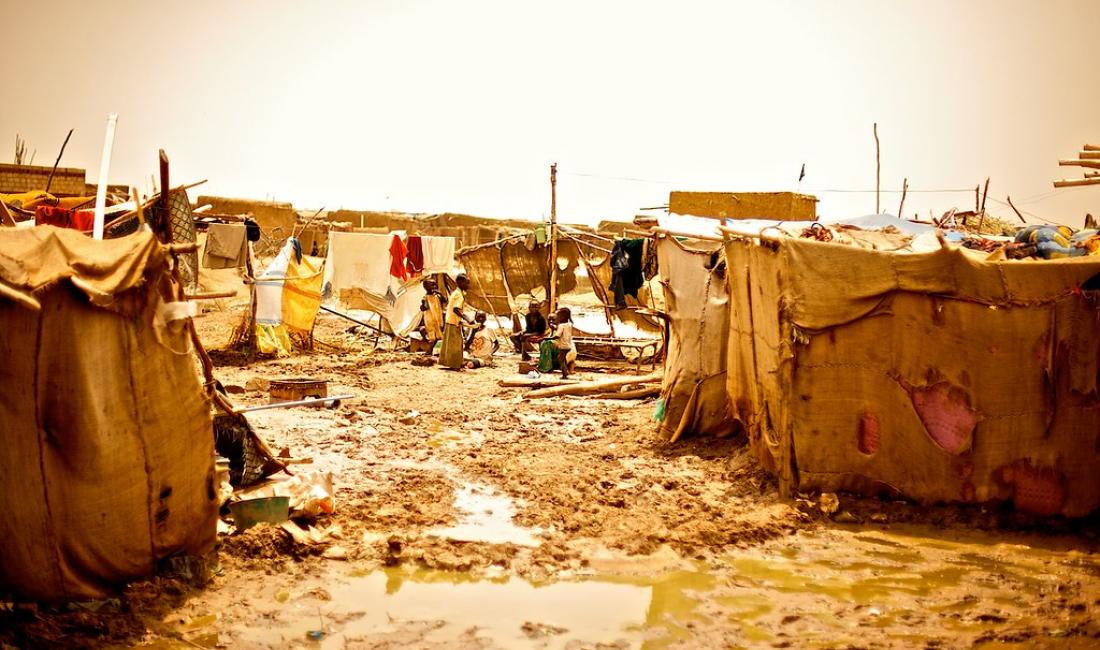A new approach to the question of leaving, or staying, post-disaster
This piece is being republished from The Future of Where, a Substack. Please consider subscribing. Photo by Arsenie Coseac, via Flickr CC BY-ND 2.0
In my Substack newsletter last Monday, I posed the question of whether government agencies should let people rebuild their homes after disaster has struck. This is, as I pointed out in that post, a politically tricky question, because nobody wants to be forcibly relocated by the government. (Just look at a reaction to President Trump’s proposal to relocate 2 million Palestinians from Gaza.)
Yet the cost to our society of not relocating people from risky areas keeps growing. Most notably, it’s creating a crisis for the insurance companies, which are having an increasingly hard time staying afloat among all these disasters and are likely to jack up rates for everybody and/or leave certain markets as a result.
At the same time, in some cases – the National Flood Insurance Program being the primary example – government-subsidized insurance means that people living in risky areas are protected from loss but don’t pay the full cost of the risk (which is borne by the rest of us).
And, of course, whenever disaster does strike, the Federal Emergency Management Agency swoops in with billions of dollars – if not tens or hundreds of billions – to help people out and clean things up. Again, this is shifting the cost of a disaster from those living in affected areas to all taxpayers.
There are those who believe that this would sort itself out if only people living in risky areas bore the full cost of the risk. This has a certain logic to it, but it ignores a couple of basic facts. First, it assumes that we know which areas have the most risk – which, I think the recent Los Angeles wildfires clearly shows, we don’t. We know which areas are risky, but we don’t know when or how severely disaster will strike.
And second, this line of reasoning also assumes that everybody who lives in a risky area has the financial ability to make a decision about whether to bear the cost of the risk. That may be true in Malibu or the Outer Banks of North Carolina, where wealthy people have invested their money in property, but it’s clearly not true in places like southern Louisiana, where most of the residents are people of modest incomes who’ve lived there for generations.
In his new book On the Move: The Overheating Earth and the Uprooting of America, journalist Abrahm Lustgarden paints an apocalyptic picture of what is likely to happen if and when people begin to abandon risky places. As Columbia magazine summarizes it, Lustgarden “predicts that the first big, conspicuous waves of climate migration in the US will begin when the bottom falls out of housing markets in the most vulnerable regions. If these markets do crash, he writes, they are likely to crash quickly, without much warning. And then, he writes, ‘a Darwinian game of financial survival’ will ensue. Homeowners with enough cash liquidity to purchase new homes elsewhere will do so, and everyone else will be left with stranded assets, living in hollowed-out communities with less money for schools, police, and other basic services — let alone for floodwalls, wildfire barriers, and other adaptation measures that will be urgently needed.”
So maybe it’s cheaper for all of us to help people leave rather than help them stay. But how?
The Big Question: Voluntary or Mandatory
The government has two tools at its disposal in getting people to move out of risky areas: coercion and bribery. Either the government can simply declare a health and safety emergency and require people to move, or it can set up some kind of financial incentive program to encourage people to move voluntarily.
The truth of the matter is that we’re not going to forcibly move millions of people – especially wealthy ones – living in risky areas. Most likely, except in extreme cases like Isle de Jean Charles (which I discussed in Monday’s post), voluntary efforts will be preferred.
But voluntary efforts are not likely to solve the problem because of the simple fact that they’re voluntary. No matter what the financial incentive, some people won’t go. This has the benefit of reducing the risk problem, but it doesn’t solve it. And it creates, in a different way, the problem Lustgarden predicts: Some people will live in hollowed-out communities.
And it’s predictable, as Lustgarden suggests, that wealthy people will have the option of making different choices. At least at first, wealthy people in, say, Pacific Palisades will choose to move back. But if three-quarters of the people choose to never come back, the wealthy people may eventually choose to go as well, hollowing out the community even more – and further stranding those of modest means.
So, in some cases, mandatory programs may be required. And that won’t be popular. Because the burden of moving will be placed on a small and probably vocal few, while the benefit – a lower cost to society – will be spread thinly among all of us.
Who Provides The Money?
Whether voluntary or mandatory, those moving have to be compensated fairly. The United States has an ugly history of moving people without compensating them fairly, most recently in the postwar urban renewal era. So where does the money come from?
Obviously, the most likely answer is the feds or the state. But while the feds and the states usually come up with the money to recover after a disaster – California just coughed up $1.5 billion to help wildfire victims – spending money for prevention is a lot harder politically. Why pay people to move because something might happen, rather than when it has already happened.
There may be ways to bring private money into the equation, but that’s tricky. Because if people are moving from one location, they are moving to another – which should increase demand, real estate development activity, and possibly even property values. So can landowners and developers who benefit from these moves help compensate those who are losing their homes and moving?
This is the fundamental concept behind a transfer of development rights program – that you’re transferring value from one location to another and using the increased value in the so-called “receving” area to compensate those in the “sending” area. It’s theoretically a good idea. What if you could discourage people from rebuilding in the riskiest parts of Pacific Palisades by compensating them with increased property value in other parts of the community where you’d build more housing and more density?
But I’ve worked on a lot of TDR programs and it’s very hard to make them work, especially if they are voluntary. Buyers and sellers are not always in the market at the same time, and in any event the market is not likely very big. Plus, it usually only works if you are the sending and receiving areas are close to one another – essentially, in the same real estate market. Is a Palisades property owner really going to trade the possibility of rebuilding their single-family home for money derived from building apartments nearby? If you want to transfer development rights from a second-home area like the Outer Banks, where do you find a receiving area of equal value.
So much of this depends on the market’s perception of the remaining value after the disaster. If the value is high, then people can afford to rebuild and they’re not likely to participate in a buyout (which would be very expensive anyway). If the value is low, then people can’t afford to rebuild and they’re stuck.
I’ve focused mostly in this piece on the barriers to making buyouts and relocations work. But make no mistake: A reckoning is coming. Yes, some very wealthy people will rebuild in Malibu or the Outer Banks even if they can’t get insurance. But otherwise a lot of people will take a huge financial hit if they can’t rebuild. We’ve got to start rethinking whether and how we rebuild communities after disasters, and how to protect people from financial wipeout while minimizing the cost to the rest of us.
Speaking of disasters, for those of you seeking AICP-CM Sustainability and Reslience credit, check out my one-hour on-demand course on what California planners need to know about wildfire. You can find the course here.



